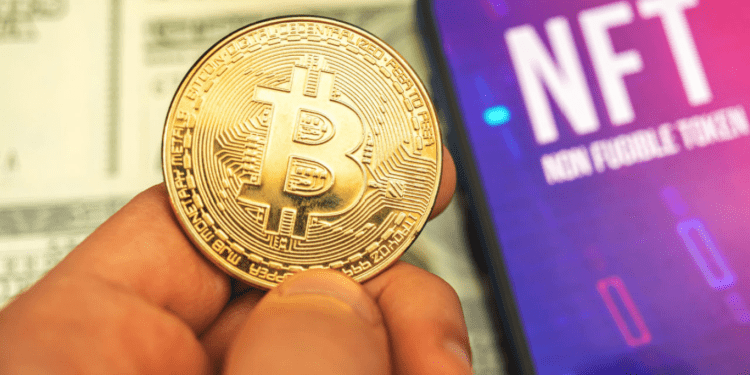- Ordinals developers have introduced an upgrade, recursive inscriptions, to overcome Bitcoin’s 4 MB per block size limitation for NFTs.
- Recursive inscriptions allow referencing the content of other inscriptions, streamlining storage and reducing transaction fees.
- It enables the creation of complex functionality, such as video games, on the Bitcoin network and opens the possibility of an internal internet within Bitcoin.
Bitcoin inscriptions have created a lot of buzz in recent months and have split the Bitcoin community in two. And the latest update, “Recursive Inscriptions,” is likely to be just as contentious. Thanks to the upgrade, inscriptions can “indirectly” break the 4 MB block space limit.
Luxor’s Charlie Spears stated on Twitter that the mastermind behind Ordinal’s Casey Rodarmor “just merged Recursion. Now comes the real fun.” The concept is comparable to BRC721. Although the size of each inscription is less than 4 MB, the combined memo can now exceed that limit.
Recursive Inscription’s Contribution to Bitcoin
Earlier this year, The Ordinals protocol introduced the ability to fully inscribe any file on the chain if it was less than 4MB. Another limitation was that different inscriptions were unaware of each other and could not reference one another.
The introduction of Recursive Inscription will change this as Inscriptions will now be able to use a special syntax to request the contents of other inscriptions, as summarized by a prominent Ordinals member known as “Leonidas.og” on Twitter. According to Ordinals supporters, the new use cases this will enable are enormous.
Leonidas further explained, “…rather than inscribing 10,000 JPEG files for a PFP collection individually which would be quite expensive, you could inscribe the 200 traits from the collection and then make 10,000 more inscriptions that each use a small amount of code to request traits and programmatically render the image.” This would have saved over a million dollars in transaction fees in the case of Bitcoin Apes.
Furthermore, in addition to the existing JPGs, 3D art may now find its way onto the blockchain. “But we can think even bigger,” Leonidas writes, citing the uploading of code packages for complex applications as another new use case.
According to OrdinalHub on Twitter, the BTC Core client, for example, could be stored on the blockchain. Bitcoin Core is approximately 15 MB and was previously considered too large due to the block size limit. Recursive inscriptions are the solution once more:
Imagine we could split up parts of Bitcoin Core, load just an executable frontend, and the program “calls” the code it needs from other inscriptions. You’re now running Bitcoin ON Bitcoin.
Moreover, the Ordinal community believes that complex 3D video games will soon be able to run entirely on Bitcoin. Developers could divide games into multiple inscriptions, each containing a different piece of code, and display them in a single inscription. Leonidas concludes:
“The sky is the limit. Bitcoin is essentially getting an internal internet where every file can request data from the other files on Bitcoin. […] Explorers such as the official ordinals explorer and ord.io will soon support recursive inscriptions, effectively turning them into a BTC web browser. Have fun surfing Bitcoin!”
Overall, how the community will react to the new Ordinals upgrade remains to be seen. However, the heated debate is unavoidable.














